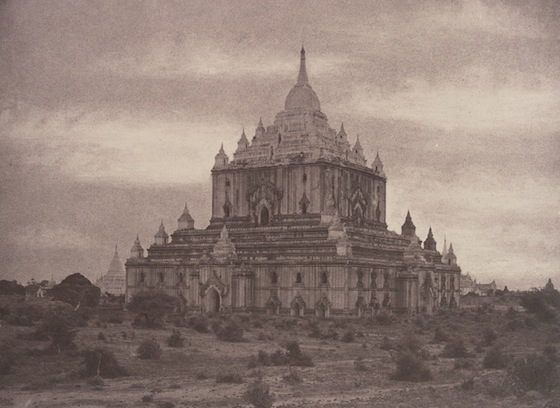An exhibition of photographs by one of the most distinguished photographers of his age has gone on display in London, curated by a De Montfort University Leicester (DMU) Emeritus Professor.

‘Captain Linnaeus Tripe: Photographer of India and Burma 1852-1860’ is a collection of pictures documenting the Indian subcontinent and is ready for display at the Victoria and Albert Museum (V&A) until 11 October as part of their India Festival.
The exhibition was curated by DMU Emeritus Professor of Photographic History Roger Taylor, alongside Sarah Greenough of the National Gallery Washington and Malcolm Daniel from the Museum of Fine Arts in Houston. It has enjoyed runs at National Gallery Washington and the New York Metropolitan Museum.
Professor Taylor said: “It has taken five years to pull this all together. These are pioneering pictures and are amongst the earliest known photographs of South India and of Upper Burma and they show you the area at a point where the British relationship was still stable.
“They are of particular interest to the audience in Leicester because of the city’s roots in Indian culture.”
Linnaeus Tripe was a soldier with the East India Company but also a founding member of the Photographic Society in London. He travelled to India and Burma, now Myanmar, first as a soldier and amateur photographer. Later he became official photographer to the Madras Presidency, but because he took pictures of less-visited locations his work has not been as widely circulated as other photographers of his time.
Professor Taylor’s interest in Captain Tripe and his work was first stirred when he curated an exhibition called Impressed by Light that went on display at the Met in 2007 and focussed on paper negatives of the type which Tripe used.
But it was Tripe’s process that fascinated Professor Taylor. “He had the eye of a surveyor and the sensitivity of an artist,” he explained. “He was a military man first and foremost and was very disciplined and controlled in his work. He composed pictures with care and deliberation and made them tell you exactly what you need to know, but the process itself cannot ‘see’ skies so he went through and added details like clouds and reflections.
“No-one reached those levels of detail as consistently as he did.”
The exhibition itself is the culmination of 25 years' work. Professor Taylor said: “There are two parts to every exhibition. There is selecting what we want to show, so you choose the 60 photographs, and then you have to start on the exhibition catalogue, which outlines the exhibition, Tripe, and working in the 1850s for the East India Company.
"I found a catalogue of Tripe’s work written over 20 years by a woman called Janet Dewan and that became my bible. She had logged every photograph and what I had to do was place it all in its historical context.”
But it wasn’t as easy as Professor Taylor makes it sound. “The East India Company archives are in the British Library and take up five kilometres of shelving – I have a book on my shelf that is just an index of the indexes!”
Roger Taylor is an Emeritus Professor at DMU’s
Photographic History Research Centre and is a guest lecturer at the prestigious centre, which will celebrate its fourth anniversary this month.
It has a unique approach to photography and its social effects, and undertakes innovative research on photography and its practices from the early nineteenth century to the present day. You can find out more about the exhibition on the National Gallery of Art’s website
here
Posted on Wednesday 26 August 2015